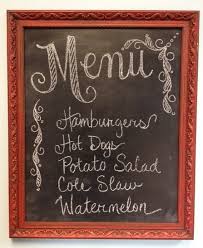My greatest joy, as a Family and Consumer Science Educator, is the vast array and interconnectedness of Family and Consumerism topics. I have always enjoyed food, but I am more intrigued by “why” I love food. For me, it is the relationships which surround it.
Vast amounts of time are spent on the science of foods, its availability, and the cost and quality of it. These are important details for sure; however, I like to look at the relationships which surround food and the reasons why people consume it. For example, the relationship that leads to childhood obesity.
September is National Child Obesity Awareness Month. In the state of Ohio, the Child Obesity Rate is 30.8%, ranking Ohio as the 28th of the 50 states in childhood obesity. Obese children are likely to become obese adults, however, changes in the childhood years can yield healthier and longer-lived lives well into adulthood.
While it takes a village to raise a child, the primary place of impression on a child’s eating habit is in the home.
Americans have shifted increasingly to eating from away-from-home food sources, including fast food, cafeterias and restaurants. Convenience foods that take less time to prepare, are indeed saving time, but often adding unnecessary calories, and other unnecessary additives. This is true across all socio-economic groups. It is an evolution of food and nutrition.
Through industrial development and computer electronic advances, government groups and brand-named food companies have developed excellent nutritional information on brochures, as well as, through website sources.
While the information on the World Wide Web is valuable and readily available, it is action that has impact; that is, making choices to improve and seeing them through to successful completion. Duly noted, parents have the strongest influence on their children’s eating pattern; parents should talk and role model good nutritional habits.
Start first, by making time to be knowledgeable about food facts and issues; a great place to start is the “farm to fork” movement. Ask your children what they are learning about in school concerning nutrition; they are learning more than they realize and certainly have a lot to contribute to a conversation.
Show a genuine interest in what they are eating when they are away from you. These are all great discussion starters. Include your children in kitchen, food and shopping decisions.
Explore the germs of your kitchen and talk about ways to limit the “sicky-ickies” by sharing in the responsibilities of kitchen food prep and storage safety. This is a great topic for children who love science experiments and enjoy. The best age group to genuinely enjoy this is middle childhood, 6 – 12 year olds.
Kitchen safety is also a top priority. Handling kitchen safety at age appropriate intervals is recommended. Model safe kitchen tool through age and teach respect rather than fear. If you fear it, they will too. Small children under 5 years of age should start out by measuring and assisting in mixing with guidance.
When fine motor skills are refined, (holding pencils and managing scissors smoothly) introducing cutting and scooping activities are great contributions, with supervision. Older children can, through a parent-involved process, create menu plans and execute total preparation with limited supervision.
As a family, take a walk on the wild side by trying and challenging each other to try something new. Look for new recipes that go with each season. Aim to add a new recipe each month with each family member selecting one on a rotation. Discuss your likes and dislikes and always incorporate local and fresh foods.
Kitchens were made to bring families together. When we work as a team and contribute to the greater good, all succeed.
Positive changes are just as contagious as negative ones. Squash childhood obesity from a new direction: as a family.


